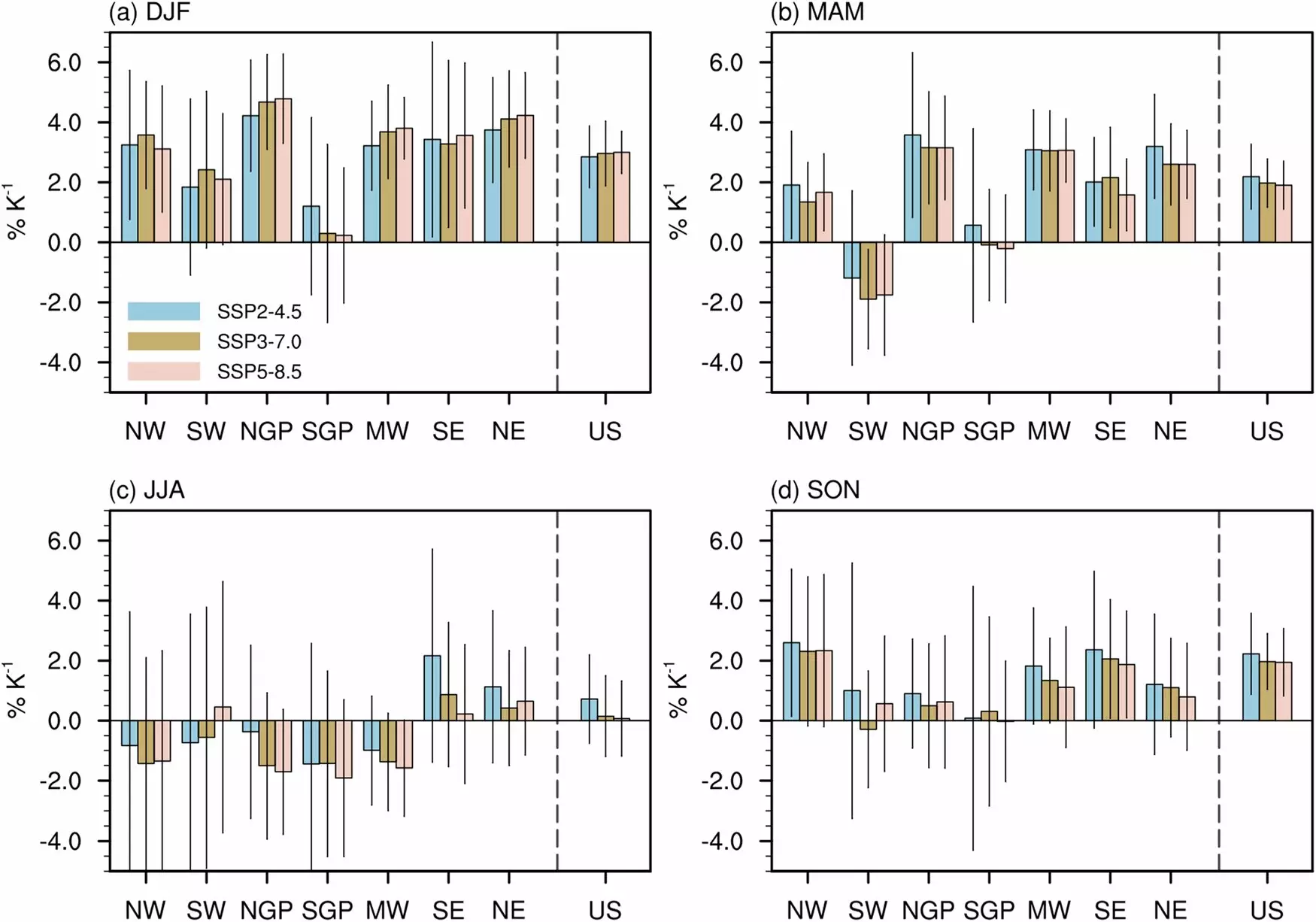Recent research has unveiled a concerning trend in the United States: due to climate change, Americans can anticipate wetter winters as we progress through the 21st century. A study spearheaded by Akintomide Akinsanola, an assistant professor at the University of Illinois Chicago, employs sophisticated climate models to estimate how winter precipitation across the nation will evolve. The study, published in npj Climate and Atmospheric Science, suggests a significant uptick in both overall winter precipitation and the frequency of extreme weather events, emphasizing the urgency for adaptation strategies in sectors ranging from agriculture to infrastructure.
By analyzing data from 19 Earth system models, the research team focused on seven distinct subregions of the U.S., as defined in the National Climate Assessment Report. Their findings project an increase in mean winter precipitation by approximately 2%–5% for every degree of warming, raising alarms about the intensity and frequency of “very wet” winters. These historically scarce events could transpire with disturbing regularity in specific areas, occurring as frequently as once every four years by the century’s end.
The significance of this study lies not just in the quantitative data but also in the qualitative implications of these changes. The expected increase in “very wet” winters, defined as those falling in the top 5% of historical precipitation records, represents a seismic shift from past norms. Notably, the research indicates that regions like the Northeast and Midwest will bear the brunt of these changes, experiencing the sharpest rises in precipitation. Contrastingly, the southern Great Plains, encompassing states such as Texas and Oklahoma, exhibited minor and uncertain projected changes. Here, the anticipation of more frequent dry spells could balance out the increase in wet conditions.
Nonetheless, the overarching narrative is one of heightened extremes across most of the country. Such fluctuations will not only alter snow and rain patterns but will inevitably impact water resources, agricultural yields, and urban infrastructure. The findings significantly dispel misconceptions about winter weather, illustrating that while summer precipitation changes remain unpredictable, winter precipitation intensification appears reliable and alarming.
The implications of this research extend beyond environmental concerns to critical societal domains. For agriculture, farmers may confront challenges associated with altered growing seasons and varying water availability. A transition from snowfall to increased rainfall signals that traditional farming practices may require adaptation, with crop types and irrigation strategies likely needing reevaluation.
Moreover, the infrastructure supporting urban areas must be proactively reassessed. As Akinsanola points out, the synchronism of heightened precipitation and extreme weather events signals a vital need for updated drainage systems and resilient building designs. Flooding, exacerbated by inadequate infrastructure, could become a pervasive issue in many regions, culminating in economic repercussions and public safety risks.
Given the urgency underscored by Akinsanola’s findings, it is critical to prioritize ongoing research initiatives that provide localized predictions regarding winter precipitation changes. In collaboration with organizations like the Environmental Science Division at Argonne National Laboratory, Akinsanola aims to deepen the understanding of how various extreme events will interact, particularly during compound crises marked by both heat and drought alongside intensified precipitation.
This comprehensive approach is essential for laying the groundwork for informed public policy and community resilience strategies. Decision-makers must account for the forthcoming shifts in winter weather in order to develop proactive solutions addressing the environmental and social challenges that climate change will inevitably present.
As winter precipitation patterns evolve, the U.S. faces a pivotal moment. The research by Akinsanola and his team serves as both a warning and a guide, illuminating the pressing need for systemic change across multiple sectors to mitigate the profound impacts of global warming.

